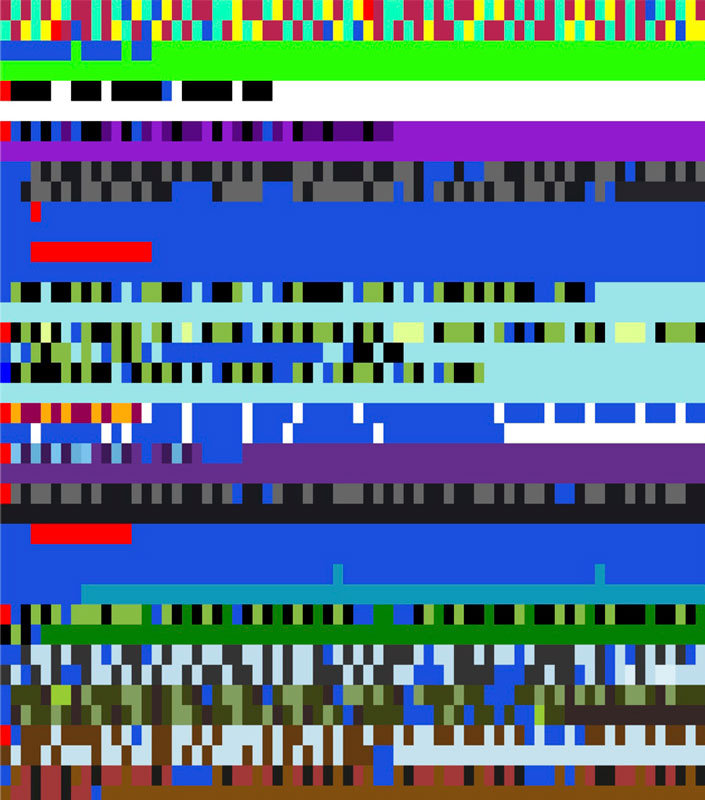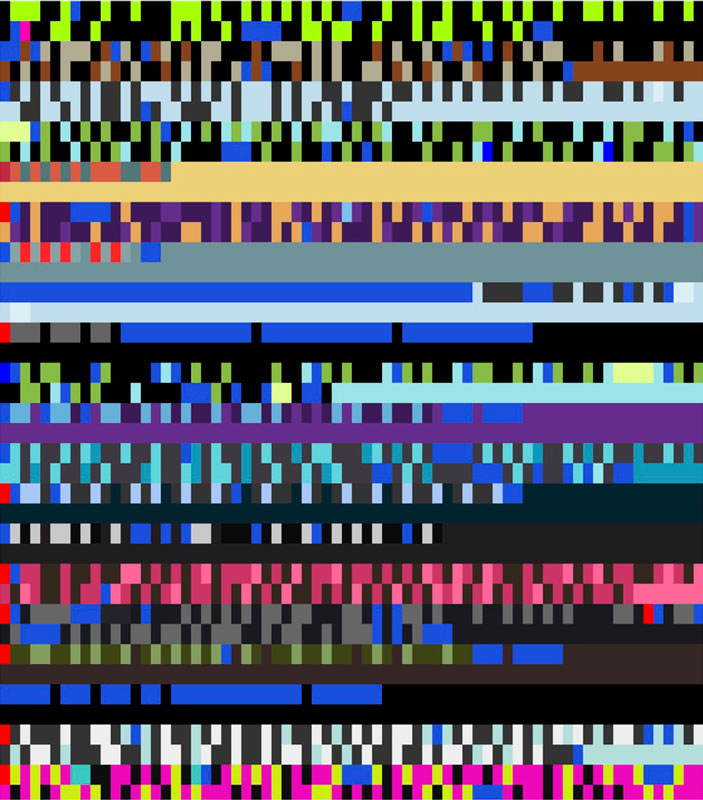SPREAD proposal for Site Santa Fe

Project Summary 200 Words
Twitterscapes are images composed of pixels that derive their color and position directly from tweets on the popular social network Twitter. They are created by an online program that obtains the data and breaks it down, character for character, into colors chosen by that user to be a part of his/her profile. In their current iteration, Twitterscapes are derived from the public timeline and are titled by day and time created, as they are effectively social media snapshots of that very moment. My SPREAD proposal is to use Twitterscapes to create a live dialogue between Albuquerque and Santa Fe, via Twitter. The physical piece will exist in two installation areas, one in each city, and will comprise of a screen or projection, support equipment, and instructions: to send a tweet on Twitter including a particular word with a hash mark in front of it (called a hash tag), whereby the program will recognize these tweets and show them in Twitterscape format, in the other city, live, in real time. The result will be a cascade of colors and pixels created by human beings, exchanged back and forth; visible at the installation sites and online.

How will you use the grant to make your idea happen? 50 Words
The creative technology behind Twitterscapes already exists. The grant will be used to solely to secure two installation sites and needed equipment: two computers, two screens or projectors, and two internet connections.Project timeline?50 Words
Work to secure space for two late summer months (August and September, September and October, or longer) will begin immediately. After space is secured, projection equipment or screens will be selected for optimal exhibition in the spaces. Installation will occur one week before opening.Why is this project important?100 Words
 The goal is to engage the public in a voluntary dialogue between Albuquerque and Santa Fe, and to draw awareness to the means by which we now rely on communicating: smart phones, iPads, and other devices that will be used by participants on-the-spot and off-site to participate. It might also engage creative thinkers to look beyond their understanding of social media and think of additional beneficial uses for its endless supply of data. It will certainly reach the pedestrian communities around the installation sites and bring social media, with all of its interaction, off of the devices where it now resides.
The goal is to engage the public in a voluntary dialogue between Albuquerque and Santa Fe, and to draw awareness to the means by which we now rely on communicating: smart phones, iPads, and other devices that will be used by participants on-the-spot and off-site to participate. It might also engage creative thinkers to look beyond their understanding of social media and think of additional beneficial uses for its endless supply of data. It will certainly reach the pedestrian communities around the installation sites and bring social media, with all of its interaction, off of the devices where it now resides.
